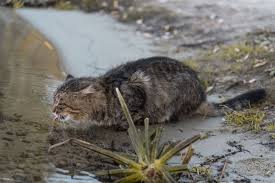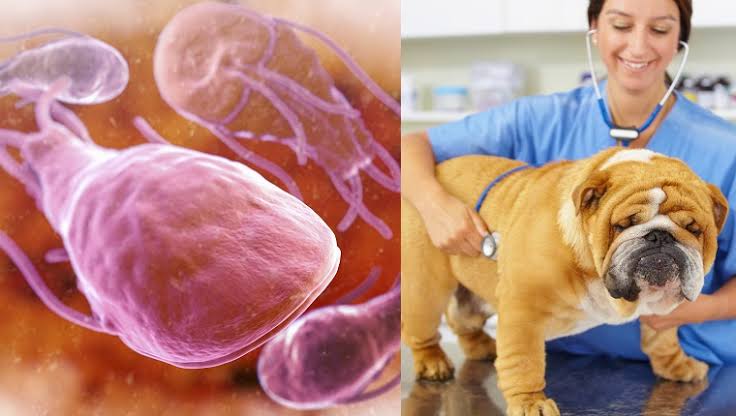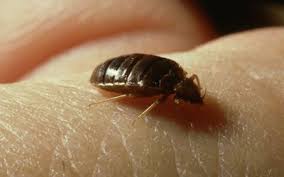Giardiasis: Description, Damages Caused, Control and Preventive Measures
Giardiasis, scientifically known as Giardia lamblia infection, is an intestinal illness caused by a microscopic parasite. This tiny troublemaker, Giardia lamblia, finds its home in the small intestine of humans, leading to a condition that can cause discomfort and disrupt daily life.
Giardia lamblia, often referred to as Giardia, is a flagellated protozoan that exhibits a distinctive teardrop shape. Despite its diminutive size, measuring only about 10 to 15 micrometers, this organism can wreak havoc on the gastrointestinal system, causing a range of symptoms that affect individuals worldwide.
The transmission of Giardia typically occurs through the ingestion of contaminated food or water. This resilient parasite can survive in various environments, making it a persistent threat in both developed and developing regions. Once ingested, Giardia undergoes a life cycle within the small intestine, attaching to the intestinal wall and causing inflammation.
The hallmark symptoms of Giardiasis include diarrhea, abdominal cramps, bloating, and nausea. These manifestations can persist for weeks, leading to dehydration and weight loss in severe cases. It is crucial to recognize the signs early on to seek timely medical attention and prevent further complications.
Diagnosis of Giardiasis often involves stool sample analysis, where the presence of Giardia cysts or trophozoites can be detected. Treatment typically involves antimicrobial medications prescribed by healthcare professionals, aiming to eliminate the parasite and alleviate symptoms.
Preventing Giardiasis involves practicing good hygiene, such as thorough handwashing, especially in environments where the risk of contamination is high. Avoiding consumption of untreated water from potentially contaminated sources is also a key preventive measure.
Giardiasis, caused by the microscopic parasite Giardia lamblia, is a prevalent intestinal infection with global implications. Understanding the transmission, symptoms, and preventive measures is essential for mitigating the impact of this microscopic intruder on human health. Awareness and proactive measures can empower individuals to safeguard themselves against the potential disruptions posed by Giardiasis.
Read Also: Bean Common Mosaic Virus: Description, Damages Caused, Control and Preventive Measures
Animals Affected by Giardiasis (Giardia lamblia infection)

Giardiasis, caused by the protozoan parasite Giardia lamblia, is not limited to affecting humans; it can also impact a variety of animals. This microscopic intruder has been identified in both domestic and wild animals, showcasing its adaptability and wide-ranging prevalence.
1. Domestic Animals:
Dogs: Canine companions are susceptible to Giardia infection. The close interaction between dogs and humans increases the risk of transmission. Symptoms in dogs may include diarrhea, vomiting, and weight loss.
Cats: Feline friends can also fall victim to Giardiasis. Cats may exhibit similar gastrointestinal symptoms, and transmission can occur through contaminated water or contact with infected feces.
Livestock (Cattle, Sheep, Goats): Giardia lamblia has been detected in the intestines of various livestock animals. While they may not always show overt symptoms, infected animals can serve as potential sources of contamination for humans through contact or consumption of contaminated products.
2. Wildlife:
Beavers: As carriers of Giardia, beavers contribute to the environmental reservoir of the parasite. Their activities, such as building dams and altering water flow, can enhance the spread of Giardia in aquatic ecosystems.
Deer: Giardiasis has been identified in wild deer populations. The dynamics of transmission in the wild can differ from those in domestic settings, and the impact on deer health can vary.
Rodents: Certain rodent species, including mice and rats, can harbor Giardia lamblia. The presence of these animals in urban and rural environments can contribute to the spread of the parasite.
Understanding the range of animals affected by Giardiasis is crucial for addressing the broader ecological implications and potential sources of human infection. While the symptoms and impact on different species may vary, the role of animals in the transmission cycle highlights the interconnectedness of human and animal health. Vigilance in sanitation practices and veterinary care is essential to mitigate the spread of Giardia among both domestic and wild animal populations.
Damages Caused by Giardiasis
Giardiasis, stemming from the parasitic infection caused by Giardia lamblia, can inflict various damages on the affected individuals, impacting both physical well-being and overall quality of life.
1. Gastrointestinal Distress: Giardiasis primarily affects the gastrointestinal tract, leading to symptoms such as persistent diarrhea, abdominal cramps, bloating, and nausea. These symptoms can result in dehydration and electrolyte imbalances, causing additional stress on the body.
2. Weight Loss and Malnutrition: Prolonged Giardiasis can lead to weight loss and malnutrition due to the chronic nature of the infection. The parasite interferes with the absorption of nutrients in the small intestine, impairing the body’s ability to derive essential elements from ingested food.
3. Dehydration: Diarrhea, a common symptom of Giardiasis, can lead to dehydration, especially in severe cases. Dehydration poses risks to overall health, affecting bodily functions and potentially leading to complications if not addressed promptly.
4. Impaired Immune Response: The chronic inflammation caused by Giardia lamblia may compromise the immune system’s effectiveness. This can make individuals more susceptible to other infections and illnesses, further impacting their overall health.
5. Disruption of Daily Activities: The persistent and disruptive symptoms of Giardiasis can significantly impede daily activities. Individuals may experience fatigue, discomfort, and a reduced ability to engage in work, school, or social interactions.
6. Psychological Impact: Dealing with the prolonged and often unpredictable symptoms of Giardiasis can take a toll on mental health. Anxiety, stress, and frustration are common psychological responses, affecting the overall well-being of those affected.
7. Transmission Risks: As Giardia lamblia is highly contagious, individuals with Giardiasis may inadvertently spread the infection to others through fecal-oral transmission. This poses a risk to family members, friends, and communities.
8. Financial Costs: Seeking medical care, diagnostic tests, and treatment for Giardiasis can incur financial expenses. Additionally, the impact on productivity and potential work absences can further contribute to financial burdens for affected individuals.
Understanding the damages caused by Giardiasis emphasizes the importance of early detection, proper medical intervention, and preventive measures. Timely treatment not only alleviates symptoms but also helps prevent the potential long-term consequences associated with this parasitic infection.
Read Also: Rice Tungro Disease: Description, Damages Caused, Control and Preventive Measures
Control and Preventive Measures

Control and preventive measures for Giardiasis are essential to minimize the spread of the parasite and protect individuals from infection. Implementing good hygiene practices and taking precautionary steps can significantly reduce the risk of contracting Giardia lamblia. Here are key measures:
1. Hand Hygiene: Thorough and frequent handwashing with soap and water is crucial, especially after using the toilet, changing diapers, and before handling food. Proper hand hygiene helps prevent the oral-fecal transmission of Giardia cysts.
2. Safe Water Practices: Ensure the consumption of safe and clean water. Boiling water or using water purification methods, such as filtration or chlorination, can effectively eliminate Giardia cysts. Avoid drinking untreated water from potentially contaminated sources.
3. Food Safety: Practice safe food handling and preparation. Wash fruits and vegetables thoroughly, and cook meat and seafood to recommended temperatures to eliminate any potential Giardia contamination.
4. Personal Hygiene in Childcare Settings: In childcare settings, maintain high standards of hygiene, including regular handwashing for both caregivers and children. Promptly change diapers in a sanitary manner to prevent the spread of Giardia.
5. Environmental Sanitation: Proper disposal of human and animal feces is essential to reduce environmental contamination with Giardia cysts. Adequate sewage treatment and waste management contribute to preventing the spread of the parasite.
6. Avoiding Contaminated Recreational Water: Refrain from swimming or participating in water activities in bodies of water known to be contaminated. Giardia cysts can survive in recreational water sources, posing a risk of infection.
7. Vigilance in Outbreak Situations: During outbreaks or in areas with a higher prevalence of Giardiasis, public health authorities should implement measures to identify and control the source of contamination. This may include advising on water treatment, sanitation improvements, and public education.
8. Pet Hygiene: Maintain good hygiene practices with pets, especially in households with dogs and cats. Dispose of pet feces promptly and wash hands thoroughly after handling pets to prevent potential transmission of Giardia.
9. Education and Awareness: Raise awareness about Giardiasis and its prevention methods in communities, schools, and healthcare settings. Educating individuals on the importance of personal and environmental hygiene contributes to a collective effort in preventing infections.
10. Prompt Medical Attention: If symptoms of Giardiasis occur, seek medical attention promptly. Timely diagnosis and treatment not only alleviate individual suffering but also contribute to preventing the further spread of the parasite.
By incorporating these preventive measures into daily routines and community practices, the risk of Giardiasis can be significantly reduced, promoting overall public health and well-being.
Frequently Asked Questions (FAQs) About Giardiasis (Giardia lamblia infection)
1. Q: What is Giardiasis?
A: Giardiasis is an intestinal infection caused by the microscopic parasite Giardia lamblia. It affects the small intestine, leading to gastrointestinal symptoms such as diarrhea, abdominal cramps, and nausea.
2. Q: How is Giardiasis transmitted?
A: Giardiasis is commonly transmitted through the ingestion of water or food contaminated with Giardia cysts. Direct person-to-person transmission is also possible, especially in settings with poor hygiene.
3. Q: What are the symptoms of Giardiasis?
A: The symptoms include diarrhea, abdominal cramps, bloating, nausea, and weight loss. In some cases, individuals may be asymptomatic carriers, showing no noticeable signs of infection.
4. Q: How is Giardiasis diagnosed?
A: Diagnosis often involves analyzing stool samples to detect the presence of Giardia cysts or trophozoites. Additional tests, such as blood tests or endoscopy, may be performed in certain cases.
5. Q: Can animals transmit Giardiasis to humans?
A: Yes, animals such as dogs and cats can harbor Giardia lamblia. Close contact with infected animals or their feces can pose a risk of transmission to humans.
6. Q: How can Giardiasis be treated?
A: Antimicrobial medications, typically prescribed by healthcare professionals, are used to treat Giardiasis. Common medications include metronidazole and tinidazole.
7. Q: Are there long-term consequences of Giardiasis?
A: Prolonged Giardiasis can lead to weight loss, malnutrition, and immune system impairment. However, timely treatment usually prevents long-term complications.
8. Q: How can Giardiasis be prevented?
A: Preventive measures include practicing good hand hygiene, consuming safe water and food, maintaining pet hygiene, and promoting environmental sanitation. Education and awareness play crucial roles in prevention.
9. Q: Is Giardiasis contagious?
A: Yes, Giardiasis is highly contagious. The parasite is spread through the fecal-oral route, and individuals with the infection can transmit it to others, especially in close living quarters.
10. Q: Can Giardiasis recur after treatment?
A: Recurrence is possible, and reinfection can occur if preventive measures are not followed. Reinfection may also happen through exposure to contaminated sources.
11. Q: When should I seek medical attention for Giardiasis?
A: Seek medical attention if you experience persistent diarrhea, abdominal pain, or other symptoms consistent with Giardiasis. Early diagnosis and treatment are crucial to prevent complications and further transmission.
Read Also: How To Fix a Garbage Disposal Jam









